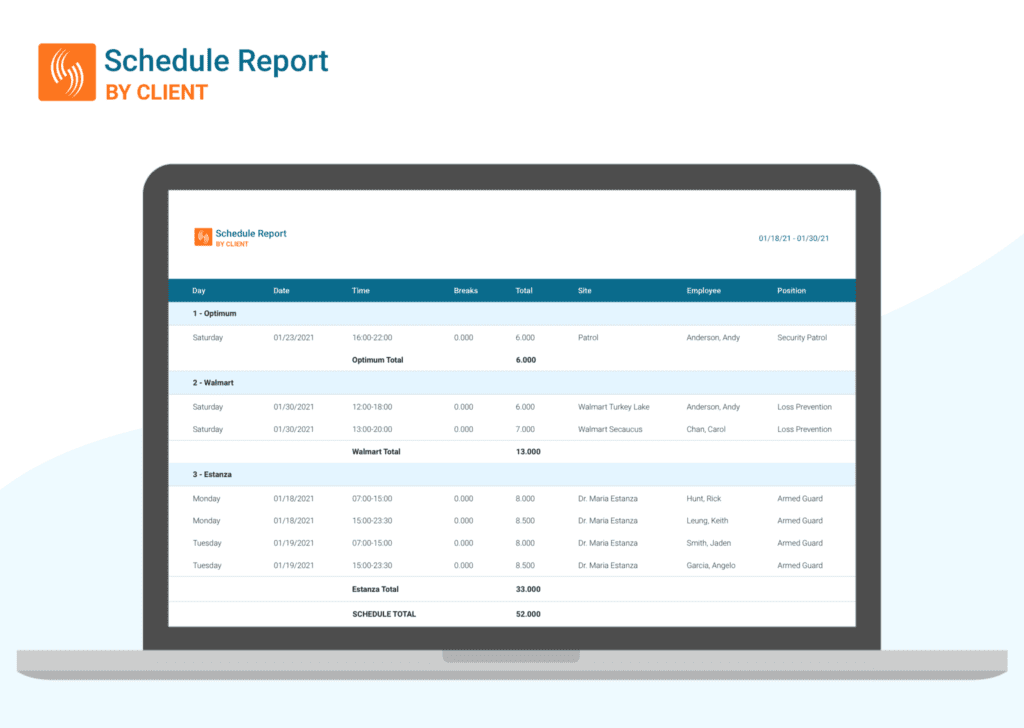What is Electronic Visit Verification?
Electronic Visit Verification is a mandate under the21st Century Cures Act. The U.S signed it into law in 2016 and applies to those in the home healthcare industry. The mandate requires state agencies to implement a system of electronic visit verification for their services. It covers personal care services and home healthcare services provided and reimbursed under Medicaid. Under the mandate, all US states must require electronic visit verification from service providers by January 1st 2023.

Why is the U.S Mandating Electronic Visit Verification?
The home healthcare industry is one of the fastest-growing industries in the last decade or so. In 2019, National home health spending soared to a whopping $113.5 billion, according to an analysis from the CMS Office. So, what’s the problem, right?
Well, there are two main problems with the home healthcare industry that have led to this mandate.
- Quality of Care
The first objective of electronic visit verification is ensuring that people get the quality of care that they are promised. Currently, there is a huge problem with patients not receiving the care they need. Electronic visit verification aims to increase accountability for caregivers to ensure that the same care that is being billed, is provided to the patient.
- Fraud
Although home healthcare is a fast-growing and lucrative industry, it is also fraudulent in nature. The National Heath Care Anti-Fraud Association estimates conservatively that health care fraud costs the nation about $68 billion annually. Electronic Visit Verification will help to minimize fraudulent care claims, through technology. Electronic visit verification will capture the following data:

- Date of Service
- Location of Service
- Type of Service
- Person receiving service
- Person providing service
- Start/end time of service
The automated capture of this data will be used to reduce the risk of fraudulent claims, or false invoicing. This information will be sent to the Centres for Medicare and Medicaid Services (CMS).
As the deadline approaches, it is crucial for home healthcare providers to be aware of the implications of electronic visit verification on their agencies. Here, we will break down the benefits of using electronic visit verification, and how you can prepare for the deadline!
Benefits of Electronic Visit Verification for Home Healthcare Providers
This mandate was introduced in order to improve the quality of care for patients and to reduce fraud. However, it is worth noting that electronic visit verification will likely have many positive impacts on your company!
Government Compliance
The first benefit of utilizing electronic visit verification is, of course, government compliance. If this mandate applies to you, you are already taking part in federal healthcare programs such as Medicaid or Medicare. Without electronic visit verification, your organization will no longer be government compliant. This would result in you no longer being able to participate in those programs, as well as the possibility of your facility being shut down. Compliance in home healthcare is extremely important, and the same will apply to electronic visit verification once the deadline passes.
Eliminate no-shows, late starts & time theft
Although not all managers are aware of it, timesheet or timecard fraud can cost you as much as 7% of your total payroll. As noted above, two of the data points recorded for electronic visit verification are visit start and end times. This will prevent caregivers from falsifying timesheets or claiming pay for visits they never carried out. Even better than that, when caregivers know that their visits are being recorded, they are far less likely to miss them at all. The reduced time theft & absenteeism will improve your bottom line.
Improved Communication & Management
As most home healthcare providers likely know, managing a mobile workforce can be time consuming and rather difficult. Keeping track of where caregivers are is a huge challenge for managers. Electronic visit verification software generally uses GPS Check ins via mobile app, giving managers a digital record of where every carer is, or has been. Managers will also be able to use electronic visit verification software to track tasks and reports as they are completed. They can view carer sign-offs, and keep track of progress when necessary. Not only that, but managers will also be able to communicate securely with caregivers in the field through the mobile app, which is important. Other, unsecure communication methods would breach the privacy rights of patients.
The above points, along with the improved patient care are all good news for home healthcare agencies. While there has been some debate as to whether electronic visit verification will help or hinder the industry, it seems pretty clear that home healthcare agencies will ultimately benefit. Now that you can relax, knowing electronic visit verification is a change for the better, let’s see how you can prepare!
How to prepare for the Electronic Visit Verification mandate
Electronic visit verification brings with it a lot of change, for both managers and caregivers. This means it’s super important to be prepared, and to prepare your employees. There are some considerations to keep in mind as the deadline approaches.
Check your state model
Each U.S state has their own electronic visit verification model. At present, there are 5 different types of state models being used:

Open Vendor: The state selects an EVV vendor and data aggregator. Providers can use a state-sponsored vendor free of charge, or work with another EVV vendor at their own expense. Alternative EVV vendors must integrate with the state’s data aggregator.
State Mandated External Vendor: Providers must use the state-sponsored, state-funded vendor.
State Mandated In-House System: State’s build their own EVV system, which all providers must use/integrate with.
Provider Choice: Providers select and pay for their own vendors.
MCO Choice: Managed Care Organizations select the vendor and cover the costs.
If you’d like to find out which model your state is using, visit our dedicated page here!
Educate your employees
As the deadline approaches, it is vital to ensure that your employees are aware of the upcoming changes. Educate them on what specifically will change when it comes to their current workflow, and why they are happening. When employees are aware of, and understand changes that are happening, there is generally less resistance.
Not only that, but you will have to educate employees on the new software that they will be using for electronic visit verification. As we go on to cover below, generally you will want software that is easy to use. However, regardless of the usability of the software, taking the time to create new processes around it, and ensure employees know their new workflows is key to a successful adaption.
Choose your software

When it comes to choosing software to manage your electronic visit verification needs, there are a lot of things that need to be considered.
Does it integrate with existing systems?
As a home healthcare provider, you are likely using software/systems that have been in place for years. Whether it’s your patient management system, your payroll software or you billing system, you likely won’t want to disrupt that workflow. Choosing electronic visit verification software that integrates and works well with these existing systems is important to ensure that operations can continue as needed. Speak to vendors and ask about their integration abilities. If you’d like to know more about Celayix integrations, take a look here.
Is it easy to use?
Usability is often overlooked by customers when searching for software in general. There is often a focus on features and technology, ignoring the idea that the software should be easy to use. When it comes to electronic visit verification software, the last thing you want is to add to the workload of managers or caregivers. The software should be logical for the workflow, easy to learn, and easy to use. Choosing software that requires extensive training, and that requires carers to spend more time on data entry, etc. is counterproductive.
Can date be exported how you need?

A major consideration specific to electronic visit verification is how your data can be exported. Depending on the data aggregator in your state, you will need your data available in specified formats. Your software provider should be able to provide this, with no issues. To find out how your data needs to be exported, you will need to coordinate with your state’s data aggregator.
Are there other benefits?
Finally, when choosing electronic visit verification software, you might want to investigate any other features or benefits it might provide. If you are required to purchase this software anyway, you may as well make the most of it. Celayix is a great example of this. Although it can satisfy all of your electronic visit verification needs, it can also provide employee scheduling features. While this may not be something you thought you needed, you would be surprised. Our employee scheduling software can reduce the time you spend on scheduling by up to 95%. It can also save you money, on things like unnecessary overtime.
There is also benefits to using employee scheduling software specifically when it comes to home healthcare workers. As we know, burnout is a huge issue in the healthcare industry. Celayix can provide flexible scheduling features like self-scheduling and shift bidding that can help you manage burnout. If you’d like to hear more about how Celayix can help satisfy your electronic visit verification needs, contact a solutions advisor here!






